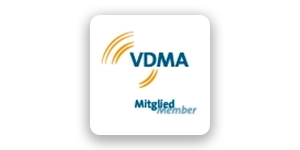Product Information Management
PIM and SEO – The Dream Team for Successful Websites

Content
This is How PIM Supports Your SEO Strategy
If you want to market your product successfully, your customers will have to know two basic things:
1. that your product or service even exists,
2. and what makes your product or service unique.
For a positive purchasing decision, what customers need is relevant product information. And they need to be able to find this information via search engines such as Google or marketplaces like Amazon, eBay, and others. Would you’ve guessed right? Around 81 percent of all online shoppers use the search results provided by search engines to form their purchasing decisions, so-called Search Engine Result Pages or, in short, SERPs (source: datareportal.com).
Taking this into consideration, it’s indispensable for companies – be it retailer or manufacturer – that their own products occupy the upper ranks in the search results of relevant search requests. In order to come closer to realizing this goal, there is a scope of relevant measures from the field of Search Engine Optimization, in short SEO. And the best news is: A PIM system can support you in realizing many of these measures. In today’s blogpost, we want to have a closer look at precisely these measures.
💡 What is a PIM system?
In a PIM system (Product Information Management system), product information is pooled together in a centralized manner, enriched with content, and, eventually, distributed to the various touchpoints frequented by your target group. In the process, all data is, initially, stored and organized in a media-neutral fashion and only subsequently individualized for exports depending on the target channel.
Presenting Brightly-Polished Product Page Content
Be it for SEO or user experience – your product data and information is the conditio sine qua non for both successful product marketing and sales. Among other things, this includes product descriptions, images, product properties and features, as well as SEO-related information such as meta data (e.g., title and description) which contribute to the visual presentation on search result pages. Don’t forget that digital assets like pictures and videos are also important for a positive purchasing decision – they’re also relevant for search engines and should, therefore, be set up appropriately so that they can be recognized by search engines. All this and more information can be centralized, managed, and exported into the respective target platforms in and through a PIM. But this is not all a PIM can contribute to: The meta data for digital media files can also be set in an automated manner and distributed accordingly.
💡 Tip: Nobody likes long loading times! Make sure to keep the file size of your digital assets, in particular your images, as low as possible while maintaining maximum quality. With an integrated DAM system, you edit and optimize your images together with all product data in one go.
Enhance Link Juice with Internal Links
Links are super helpful – they guide us through the internet and provide us with much needed orientation. Accordingly, links also have an especially important function for website operators, too. With them, you can boost the user experience, control the click depth, and improve your search engine ranking. The better the linking on a website, the better the chance for a good ranking. The quality of force of a link is generally referred to as “link juice” or “link equity.” In online shops in particular, this is especially relevant for the link network between related products, different product variants, supplementary items, as well as replacement parts or articles for products which may or may not be currently available.
Considering this quantity, it’s perhaps unsurprising just how easy it is to lose the overview of all the various links. And this is where the PIM software comes into play once more. To each individual product, you can add various kinds of easily manageable reference attributes. For example, you can link spare parts and supplementary items with one another and, consequently, export these reference to your shop as necessary. It’s easier to establish a meaningful and SEO-oriented product link network this way. This method is also extremely helpful when it comes to assortment changes. In a PIM, you can equip your successor products with links to decommissioned products at the click of a few buttons, so that relevant URLs are easier to be identified in the context of search-engine-friendly redirects (so-called 301 redirects).
Automate Search Engine Feeds
Being up to date in the fast-moving online world has become more important than ever. Your product information is to be fully up to date around the clock and free of errors. Which is why many shop operators who manage a great number of products utilize so-called feeds in order make sure that search engines and marketplaces stay in touch with all changes and novelties. Since feeds have to be continually updated, and since both search engines and marketplaces have different requirements for their related data fields, it’s nigh impossible to maintain everything manually. The easiest way is to simply leave the job to your PIM system. From here, data can be directly transmitted to Google, Amazon, and co. You can manage and distribute search engine feeds in your PIM in a simple and centralized manner. Equipped with this high degree of automation, you save valuable resources and avoid manual errors.
💡 Tip: Thanks to the higher degree of automation, you can expand your sales strategy with Longtail Business with just a few clicks, allowing you to benefit from niche products with high profit margins – without any additional effort.
Profit from Quality Management thanks to Higher Data Quality
High-quality product data and information are an integral part of SEO. After all, of what use is the best SEO ranking if you can’t provide good product information that can convince the users? This approach would only increase the bounce rate – which would, in turn, negatively impact your ranking. This is because insufficient or simply flat-out wrong information only motivates your users to leave the shop and look for the desired product elsewhere. So, how can you establish such high-quality product information?
With the help of data quality rules in PIM you can, for example, only distribute all those products to your shop which really have all relevant information and images in the defined format and quantity. This guarantees for a high product data quality in your shop. Additionally, you can use such settings for SEO attributes like meta-title and description in order to assure that the relevant information is maintained for all products and their variants.
Good-bye, Duplicate Content
Those who offer a great variety of products are familiar with this: Given the sheer mass of data to be maintained, accidents just as re-using one and the same product description on different platforms or even in different spots on the same platform are quick to happen. This is commonly referred to as duplicate content. This, however, can quickly spiral into negative consequences for your ranking and your company as a whole:
- Duplicate content translates into a meager user experience.
- With internal duplicate content, Google can’t clearly identify the product page, which, in turn, has a negative impact on the product’s search ranking.
- With external duplicate content, on the other hand, you may run into the danger that the marketplace on which your product is promoted ranks better than your own online shop.
In order to avoid external duplicate content, your first step should be to make sure that your own page has so-called unique content to offer. That is to say, as a retailer, you shouldn’t simply re-use the manufacturer’s description and, instead, write the texts for your shop or website yourself. With a PIM solution, you’re on the save side when it comes to this topic, too. This is because PIM is designed to individualize product information for the respective marketing or sales channel.
In order to avoid internal duplicate content, in turn, you can set up specific attribute types for descriptions of product variants directly in your PIM and fill them with the various properties of the individual variants in an automated manner – at the click of a few buttons, every variant can receive its own text.
Almost Too Good to be Real: AI-generated Content
With a lot of products and product variants on your hand, the creation of unique content for every single product description will relatively quickly grow into a resource-consuming blackhole. AI tools promise a fast and practical solution. The AI-based text tool ChatGPT can even generate entire SEO-optimized blogposts.
Then again, caution is heavily advised when working with text generators based on Artificial Intelligence. This is because AI-generated content violates the content guidelines of Google and can be punished with negative rankings. Despite of this, AI tools are still useful instruments for a quick and efficient text generation. Such tools can serve well for creating the foundation of new texts, but in order to compose convincing sales arguments which do both, speak to the target group and rank well on search engines, the human being still needs to have the last word.
A PIM with connectivity to AI tools can easily provide the required information and data. This way, generated text can be automatically transferred into the PIM. With the help of data quality rules, you can make sure that such auto-generated texts will only be released to the online shop once they have undergone thorough examination by you team.
Improved Ranking for Seasonal Products
There is a great range of products which only sell on specific seasons – or do you shop for X-Mas tree ornaments during summer? To alleviate the need of rebuilding your ranking from scratch for every new season of the year, it’s considered best practice from the SEO perspective to maintain the same product pages instead of de-indexing them or to even delete them. This, in turn, doesn’t mean that you should simply leave the content of the page as is.
Imagine, for example, that you’re marketing an online shop for decoration articles. X-Mas tree decorations are best sold from October to December while making them unavailable for the rest of the year. In this use case scenario, you can simply create a second variant of your related product pages with content you can display during the time the tree decorations aren’t for sale. Accordingly, you can deactivate the purchase button, insert placeholder content, provide a countdown until the goods are available again, or provide an e-mail alert service.
With a PIM, you can maintain such additional information directly for the respective product and transfer it over to your shop in an automated manner at relevant intervals. This method is, in particular, also applicable to products which may be unavailable on short notice.
International Expansion Made Easy and Efficient
Online retail is made for tapping into new markets and pushing your international expansion forward – the internet knows no boundaries. Yet, those who want to offer their products internationally must set up a separate schema for the search engine optimization of every single country when it comes to product pages. After all, target groups differ significantly from one another – be it language or search behavior patterns.
In a PIM system, you can organize products in various language variants and, consequently, apply all the measures we’ve just discussed for every single language – the solution is just a few clicks away. With the help of translation functions or connectivity to a dedicated Translation Management System, you can see concrete results in an even quicker manner since you’ll no longer be operating with separated data aggregates for each language. An additional terminology module can even provide you with segments, sentences, and terms which fit your company’s tonality in real time. This way, you can secure the “tone of voice” of your company even in translated texts and, at the same time, guarantee that proper names, product names, and your corporate terminology together with systematically reoccurring texts are always consistent across the board.
How can Your Company Profit from a PIM? We will show you.
A PIM system supports you in improving your rankings while also taking off pressure from your employees. In our demo show, we demonstrate to you how you can use the eggheads PIM to optimize all your product data processes and design a grandiose customer experience. Sounds exciting? If so, then schedule your time with us right now – for free and without any commitments on your end!
From Our Blog
You may also be interested in the following articles







